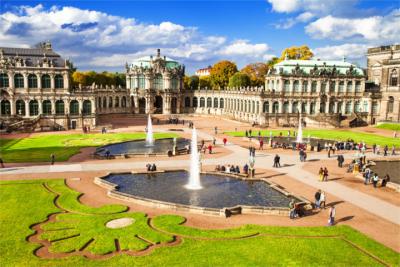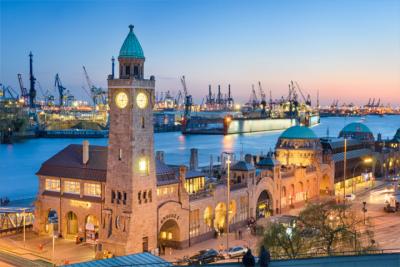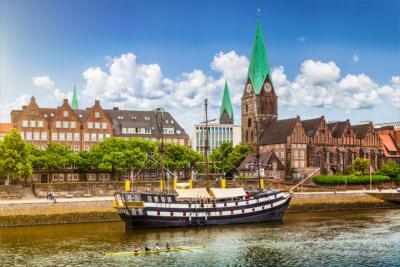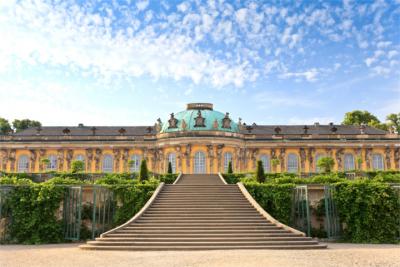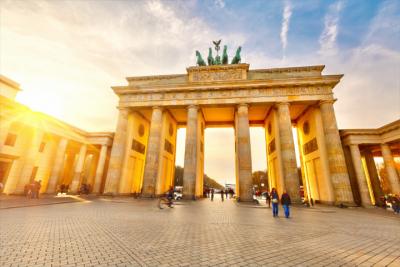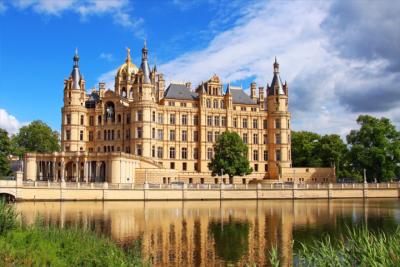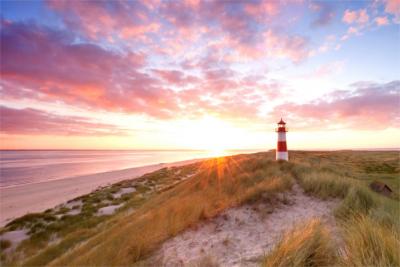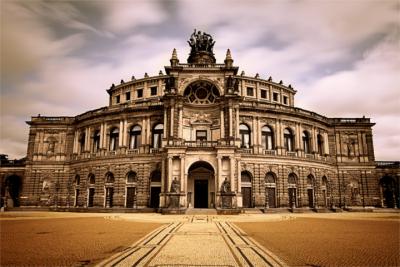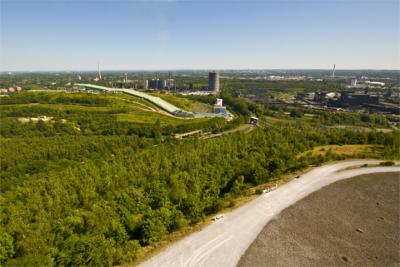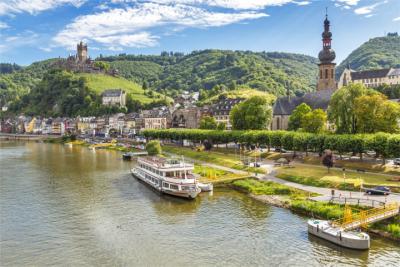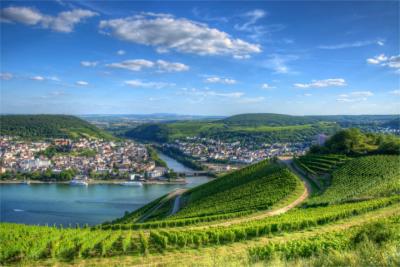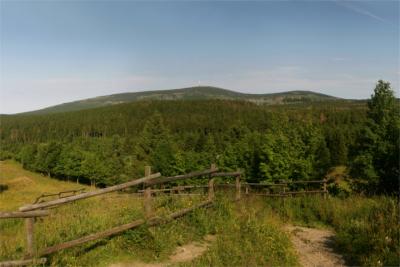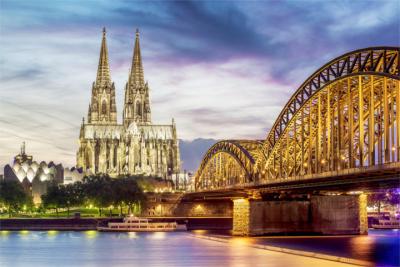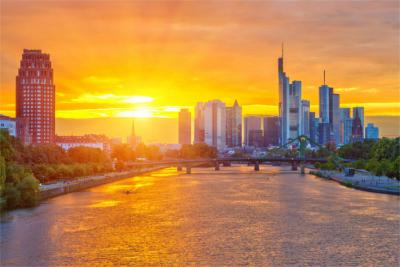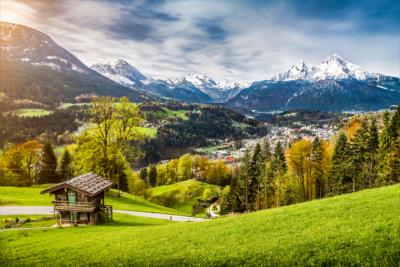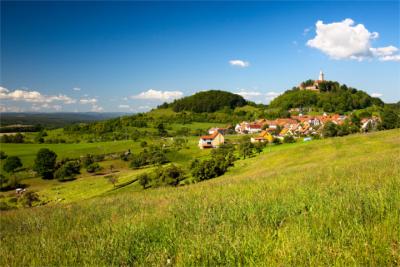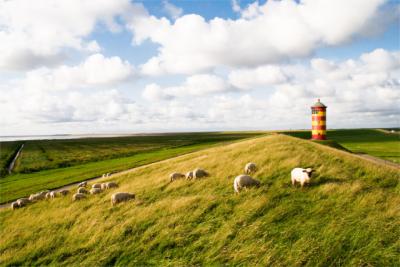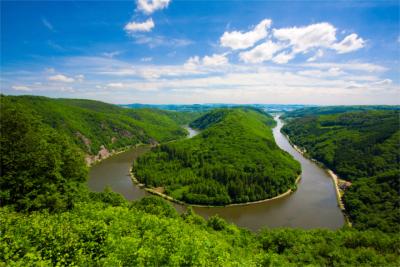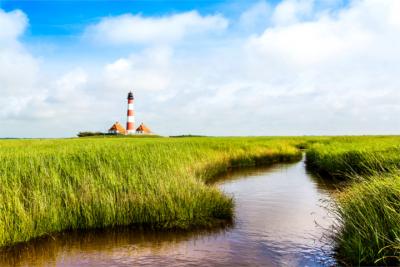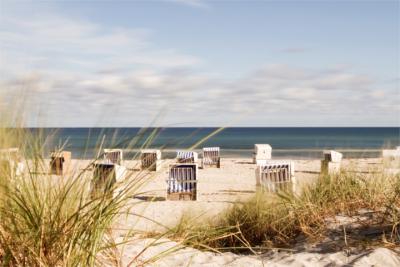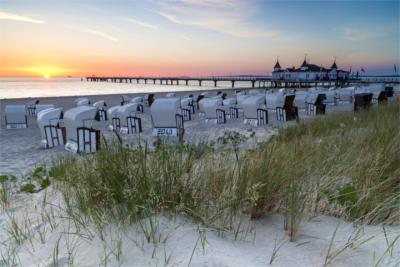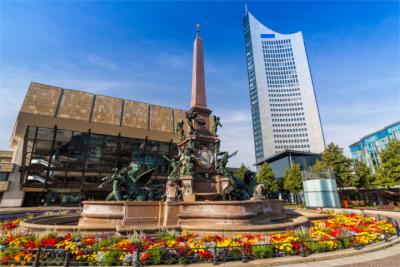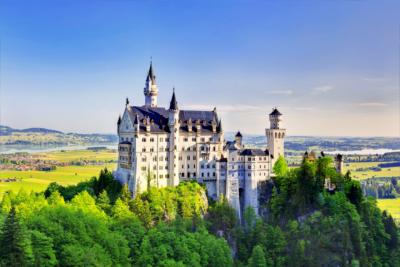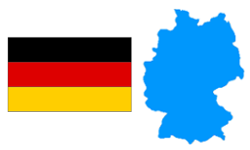Travel Offers
Travelmyne Featureprint
Distance
Germany - Rich Culture and Landscapes
Germany displays varied landscapes and a rich culture from the plains of the North Sea to the heights of the Alps. Countless castles and historical ruins make the country in the heart of Europe an attractive travel destination. Especially connoisseurs will enjoy the different specialities of the German regions.

Geography – North lowlands, Central Uplands and the Alps
Germany is located in the centre of Europe. In the north, it borders on the Baltic and the North Sea. Going upcountry you find the North German lowlands and travelling southward, you pass the Central German Uplands before you get to the Alpine foothills and finally reach the gigantic mountains of the Alps. The Zugspitze (2,962 m) is their highest point. The mighty rivers Rhine, Elbe and Oder flow from south to north, while the Danube runs from west to east. Germany has temperate climate with average temperatures between 3 and 23 °C.

Nature - Vast forests and open fields dominate the picture
Large areas of Germany are covered in forests. Oaks and beeches thrive especially well in the regions of medium height. In the mountains, you often find conifers like spruces and pines, many of which were planted artificially. Open fields are equally characteristic of the country. In some regions, these are covered in wild heath with many hardy bushes and plants or moors. In many areas, fields dominate the landscape and indicate intensive agriculture. Cereal, rapeseed, potatoes and apples are typical cultivated plants. Wine is grown at the hillsides of several rivers, for example Rhine and Mosel. Deer, boars, foxes, martens and lynxes live in the country's native areas. At the seaside, you find seals and porpoises while ibexes, chamois and marmots populate the Alps. Among the many bird species living in Germany, the golden eagle (Bavaria) and the white-tailed eagle (Brandenburg, Mecklenburg-Vorpommern) are the most prominent examples.

Natural sights - A variety of seaside resorts, Rhineland and Lake Constance
The two seas bordering Germany constitute a great, natural treasure. While the stormy, harsh North Sea is suited for taking walks and experiencing native nature, the milder Baltic Sea is a wonderful destination for relaxing, especially in the summer. The North Sea can be explored from Husum and Friedrichstadt, for example, and there are several other islands which present attractive holiday destinations. Some of the best-known ones are Sylt, Föhr, Amrum, Borkum, Norderney and Helgoland. The latter consists of red sandstone and is a paradise for birds. The island Helgoland, which protrudes from the sea with a height of 61 metres, is also populated by grey and common seals. At the Baltic Sea, especially the peninsula Darss with its seaside resorts or the tourist locations surrounding Kiel, Lübeck and Rostock are perfect places for a holiday by the sea. Particularly appealing are also the island Rügen with its chalk cliffs, the islands Fehmarn and Hiddensee as well as the peninsula Usedom. In the north of the country, the Mecklenburg Lake District is a popular region for relaxing outdoors. Several lakes form the greatest German lake district here. Germany's many Central uplands offer ideal conditions for a holiday close to nature. Some of the most popular areas are the Black Forest, the Bavarian Forest, the Odenwald and the Harz. Who wants to relax in nature can also do this at one of Germany's rivers. The Rhine is the longest river and flows through many idyllic landscapes. The Rhineland (Middle and Lower Rhine) is particularly popular. In the Upper Middle Rhineland you find the Loreley Rock, which is almost 200 metres high and named after the legendary Loreley, who is said to have distracted and ruined sailors. There are excellent destinations for relaxing in the Alpine foothills and the Alps in the very south of the country such as Lake Constance. This scenic lake is perfectly suited for water sports or you can take a comfortable tour across the lake. It is also worthwhile to visit the famous prehistorical stilt houses at Lake Constance or the culturally significant islands Reichenau and Mainau. In the Alps, the Zugspitze is a prominent destination. You can explore Germany's highest mountain by hiking, climbing or by taking a cable car. Winter sports are also possible in this region. Stunning alpine landscapes are the Berchtesgadener Land with the well-known Königssee and the salt spring. Hiking, cycling and climbing are activities you can also do in the Allgäu (southern Bavaria).
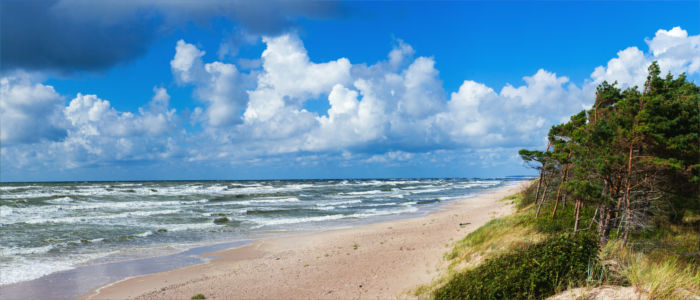
Culture - From the Germanic people to the "German Gemütlichkeit"
For about 500,000 years people have been living on the German territory. For a long time, they existed as a loose network of tribes, later called Germanic people, which developed into mostly independent principalities. A particularly strong influence on contemporary Germany wielded the rule of Charles the Great (8th century) and Otto the Great (10th century). A proper German nation emerged in 1871 when Wilhelm I, German Emperor ascended the throne. After Germany's loss in World War I (1914-1918) the Empire broke down. The era of the Weimar Republic began, which first brought wealth with the "Golden Twenties" but was then followed by the Great Depression in the thirties. During this time, the National Socialism came into power and the Second World War (1939-1945) occurred. The Federal Republic Germany, which only included West Germany back then, was founded in 1949. The present state with its 16 federal states was formed in the German reunification in 1990. The Germans are known for their diligence and ambitiousness but after work they proceed to the so-called "German Gemütlichkeit". This is the time when the Germans pace themselves, enjoy a beer or go out. Another thing which is typical of the country are the half-timbered houses, which you find in the historical old parts of many towns.

Cultural sights - Brandenburg Gate, Neuschwanstein Castle or Cologne Cathedral are first rate tourist attractions
Hip, colourful, lively, modern and fashionable – these adjectives can be used to describe the capital Berlin. In many ways it is the country's heart as a political and economic centre, as a scientific and cultural focal point, as a metropolis that sets new trends or as a city which excels in an unbelievable diversity of food and cultures. Who wants to get a feel for the trendy city life should visit the hotspot Prenzlauer Berg. The elegant, bourgeois borough Charlottenburg is also worth seeing. There you can stroll through the Kurfürstendamm (Ku'damm), which attracts visitors with its many cafes and shops. You also receive a great impression of the busy city by walking over the central square Alexanderplatz or by wandering along the boulevard Unter den Linden. Close by you find many of the capital's sights which are steeped in history: the Reichstag building as the seat of government, the Brandenburg Gate with its Quadriga on top, which was built in the 18th century, the Berlin TV Tower, which is 368 metres high and offers a spectacular view of the city, the Victory Column (69 m) and the remains of the Berlin Wall, which once separated East and West Germany from each other. Lovers of culture are advised to visit the Museum Island in Berlin, which houses sensational treasures from ancient Egypt, the Greek and Roman Empires, the Middle Ages and the Modern Age. Not far from the Brandenburg Gate you find the park Tiergarten, where you can relax outside. This is also possible along the waterfronts of the river Spree. If you stay in the northern part of the country after visiting the capital, it is worthwhile to take a trip to Germany's second biggest city Hamburg, which is considered a classic, fashionable metropolis. Popular tourist destinations in this city are the gigantic, significant European port (tours are possible), the Alster as the greatest European city lake, the smart Hanseatic borough, the baroque church St. Michaelis as well as numerous cultural facilities with the Kunsthalle as one of the most famous examples. At night many visitors are drawn to the notorious Reeperbahn in Hamburg, which offers enjoyment in many clubs and bars. Many other cities in the north of Germany still show the formerly flourishing, influential sea trade, especially during the Hanseatic era. A particularly fitting example is Lübeck with its extraordinary, well-preserved old part of town and the Holsten Gate. One of Germany's most popular attractions lies in West Germany: in the Ruhr district, which embodies the industrial boom, you find Cologne with its famous cathedral. This Gothic building with its two distinctive towers is almost 160 metres high and was build from the 13th century onward. Construction of the Cologne Cathedral was only finished in the 19th century, which is the time during which the cathedral received most of its magnificent facade. If you want to experience another first class sight, you have to travel to the southern part of the country: there you find the world-famous Neuschwanstein Castle. The king Ludwig II of Bavaria built this magical castle in the 19th century – as a counterpart to the bleak reality, in which he was under the foreign rule of the Prussians. He created a glorious medieval building enthroned on a rock. On the outside it is decorated with numerous little towers, gables and balconies at a length of 150 metres and on the inside it accommodates fascinating rooms such as the throne room, the Singers' Hall, the Grail Hall and a little artificial grotto. Close to the castle you find Munich. The lively city has a long tradition but at the same time it is modern and worldly. It is known to have a wide range of culture and museums such as the Deutsches Museum, which has a planetarium and a recreated mine. While lovers of culture are attracted by the Alte and Neue Pinakothek, a visit to the BMW-Werk is appealing to fans of horsepower. Munich's core is the Marienplatz, where you find the New Town Hall with its world-famous glockenspiel. Numerous streams of people cross this lively place every day. Not far from the Marienplatz you can dive into a world of conoisseurs and enjoy the market feel on the Viktualienmarkt. Those who want to explore cultural treasures in Munich can visit the Frauenkirche, the Residenz, the Bavarian State Opera or the Olympic Stadium. A trip to the Bavaria Film Studios in Munich is also enjoyable. Besides these cities, there are many more places in Germany which are worth a visit, among other things, because of their impressive historical evidence: Trier (the oldest German town, famous town gate Porta Nigra), Potsdam (beautiful Sanssouci Palace, Babelsberg Film Studio), Dresden (Frauenkirche, Zwinger Palace), Aachen (cathedral, hot mineral springs), Heidelberg (Heidelberg Castle, university) and Eisenach (Wartburg Castle, Johann Sebastian Bach's birthplace).

Experience - Nighttime means exuberance
At night the Germans become cheerful and exuberant. People like to enjoy a good beer, which you get in the Hofbräuhaus in Munich, for example. Beer also dominates the Oktoberfest in Munich. Every year thousands of people come to the Wiesn to celebrate. In most big cities you find a number of clubs, bars and discos for nighttime enjoyment. Besides that, the country offers a lot of culture with operas, theatres and similar institutions in basically every bigger city. Lovers of culture will also enjoy the Bayreuther Festspiele, which have been displaying performances of Richard Wagner's famous works every summer since 1951 (since 1876 if you include interruptions). The numerous leisure facilities show that Germany offers wonderful opportunities for relaxation and entertainment. Two important examples are the amusement parks Heide Park Resort and the Europa-Park in Rust. The perfect destination for relaxation are the Tropical Islands. This gigantic tropical hall in Brandenburg creates a pure rainforest feeling. Germany also offers great shopping facilities, for example the famous KaDeWe, a traditional department store in Berlin.

Activities - Numerous opportunities for being active
From the sea to the mountains - Germany's variety of landscapes offers a number of opportunities for being active. Both the seas and the many lakes are suited for water sports with windsurfing and sailing as the most common activities. The vast landscapes, hilly areas and high mountains offer excellent conditions for walks through nature - whether you want to take a relaxed or a more demanding hiking tour. Cycling is also a popular form of sports. Climbing, rafting and canoeing can best be practised in the mountains. Those who want more action, can try paragliding, bungee jumping or skydiving. Besides the great natural conditions, there are many climbing and amusement parks, go-kart tracks, dry toboggan runs, areas for quad biking and sports parks, which offer varied opportunities for physical activity.

Information
The most important German airports are in Berlin (TXL and SXF), Frankfurt/Main (FRA) and Munich (MUC) but there are many more airports which are connected to the international air traffic. The country has a fully developed rail network, so that you can travel into (from Europe) and within the country by train. The excellent road network is also perfectly suited for locomotion within the country. Germany can easily be entered by car from the neighbouring countries in most cases and you can also reach it by ship through the North and Baltic Sea. Besides the official language German, there is a number of regional dialects.
As a holiday destination, Germany is unbelievably diverse. Is has numerous cultural sites, which make the country appealing to lovers of such treasures. While the two seas allure people who love the beach and water sports, the vast landscapes and mountains attract those who want to relax or do outdoor and winter sports.

